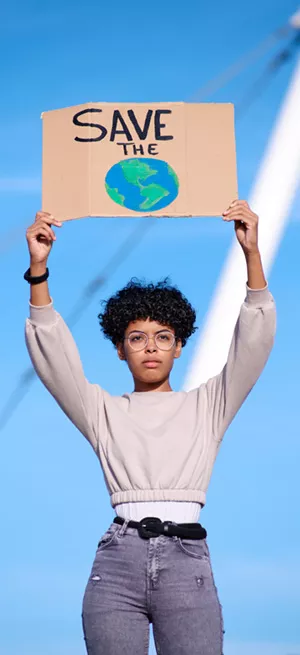
- 1. What caused the idea to take legal action and how was the contact between Saúl Luciano Lliuya and Germanwatch established?
- 2. How did the case progress after initial contact?
- 3. Why RWE?
- 4. Which role does Germanwatch play?
- 5. Which role does Stiftung Zukunftsfähigkeit play?
- 6. In case the trial proves successful, will there be similar suits against RWE and others?
- 7. What is Germanwatch hoping for?
- 8. The demand made to RWE for climate protection matters is only 17.000 €. How does this amount come about?
- 9. What would happen if RWE is sentenced to pay? 99.5% of the necessary funds are still missing.
- 10. What are the chances of seeing similar processes in other countries?
1. What caused the idea to take legal action and how was the contact between Saúl Luciano Lliuya and Germanwatch established?
For many years, Saúl Luciano Lliuya and his father, small-scale farmers and mountain guides, have been experiencing the consequences of climate change and the tolls it has taken on them and their neighbours. In 2014 they spoke to a local agricultural advisor to discuss the effects of climate change on their region. They raised the question of why the main culprits of climate change weren’t being made responsible for its effects. To them it seemed highly unfair that people in the region were left alone with the risks of a glacial lake outburst flood caused by a possible glacial avalanche into the mountain lake above their hometown Huaraz. The people causing the risks – wherever they may be - should be held responsible for their protection. Following the discussion, the agricultural adviser, established initial contact between Saúl Luciano Lliuya and Germanwatch as he was aware – also in the context of the Climate Summit taking place in Lima in 2014 - of the organisation’s climate focus and its interest in the glacial-avalanche-issue as well as its engagement for climate justice. Consequently, a small Germanwatch delegation went to visit Huaraz after the Climate Summit in Lima. Germanwatch had already considered the possibility of ‘climate suits’ of the damaged against great emitters before.
2. How did the case progress after initial contact?
During the visit, Saúl Luciano Lliuya, his father and the Germanwatch delegation discussed the possibility of a legal trial against major co-contributors to climate change. Together with Germanwatch they went through the list of the greatest emitters, carefully considering the pros and cons of legal action against each of the greatest emitters in various countries.
Germanwatch then established contact between Saúl Luciano Lliuya and the German lawyer Dr. Roda Verheyen, an acknowledged specialist in environmental law. After legal advice, Saúl Luciano Lliuya and his father decided to take legal action against Europe’s greatest emitter, RWE.
Saúl Luciano Lliuya and his father were very concerned to not be the sole profiteers from a lawsuit. What was and still is most important to them is
- protecting their city and the mountain farmers from the imminent dangers of a flood wave
- raising awareness about the risks within the community and developing strategies with locals to remedy the situation (a local NGO has been founded for this matter)
- holding accountable local public offices and institutions to their obligation to protect their citizens (which is not easy due to the regional political structures)
- establishing precedence for other damaged people and groups to refer to in similar cases and thereby exert additional pressure on political entities
3. Why RWE?
RWE credits itself with being the biggest singular CO2 emitter in Europe and, according to recent studies, is responsible for around 0.5 % of anthropogenic emission since the beginning of industrialisation. RWE is still burning coal (especially brown coal).
4. Which role does Germanwatch play?
Germanwatch supports the suit – mainly regarding press and publicity matters – due to its characteristic in being a legal test case to clarify responsibilities for climate change and its consequences, to support people affected by climate change and to further emphasise the necessity to redirect climate politics globally. Germanwatch is not a participant of the lawsuit and does not financially contribute to covering the legal costs and fees except for reimbursement of the plaintiff’s travel expenses (see next question).
A lot of people all around the world find themselves immediately threatened by the consequences of climate change and are trying to defend themselves. Saúl Luciano Lliuya has held onto his claim for justice and encountered people and an organisation that are willing to help and take on responsibility. He himself made the decision to take the long road of legal action in coordination with his father and his lawyer. All further decisions and agreements regarding the lawsuit are made by him and his lawyer.
5. Which role does Stiftung Zukunftsfähigkeit play?
Due to the common value of this legal test case the foundation has declared willingness to reimburse the plaintiff for his legal fees and calls for donations. Saúl Luciano Lliuya himself would not be able to afford these fees.
6. In case the trial proves successful, will there be similar suits against RWE and others?
Since its foundation in 1991, Germanwatch has been committed to establishing global political responsibility that makes such lawsuits unnecessary. But because politics moves too slowly, we welcome when people in danger of damage through climate change do not await their fate, but take measures into their own hands. As in this case, we are not involved in planning but we are open to supporting in publicity matters of well-argued cases that contribute to a common good and promote political processes. We are now committed to supporting this civil lawsuit as legal precedence. From our point of view, it is likely that, if this test case proves successful, others suffering from loss or risks through the effects of climate change will follow, maybe globally. We also expect an increased variety of climate lawsuits.
7. What is Germanwatch hoping for?
Germanwatch hopes for the unprecedented juridical confirmation that contributors to climate change are to be held accountable for the protection of those at risk. We are convinced that such a decision would greatly contribute to raising the pressure to support the damaged and to deal more responsibly with loss and damage caused by climate change, in Peru as well as internationally. For example, the verdict would force the financial market to re-evaluate climate risks of the fossil industries, which could have significant consequences. Overall pressure on fossil industries would rise considerably to find new business models and to not provoke further climate risks.
We count on this to happen without the necessity of a wave of legal actions. It is not in our interest that the often poor and less informed people affected by climate change all have to make their claims against large energy corporations individually.
8. The demand made to RWE for climate protection matters is only 17.000 €. How does this amount come about?
RWE’s share of the costs of necessary security measures against a flood destroying Saúl Luciano Lliuya’s house should be as big as its contribution to human-induced climate change. A study from 2014 shows that RWE can be held accountable for a half percentage point of the entire carbon dioxide emissions caused by humans since the beginning of industrialisation. The amount demanded relates to the estimated cost of 3,5 million USD for constructing the dam in the case at hand.
9. What would happen if RWE is sentenced to pay? 99.5% of the necessary funds are still missing.
RWE can only be held accountable for its own contribution to global warming. A competent Peruvian authority has confirmed to Saúl Luciano Lliuya in writing that RWE’s money will be used as a contribution to take the necessary protective measures. Therefore we assume that the RWE-money could be the impulse needed to finally begin overdue construction. A local NGO has been founded to increase pressure. Whether the authority plans to retrieve additional financing by taking legal action against other principal generators of carbon dioxide emission is not known to us.
RWE as well as other major emitters should not be able to reject individual responsibility – as it is also not the case if damage is caused by more than one party - for the consequences of climate change just because others are also involved in causing the damage.
10. What are the chances of seeing similar processes in other countries?
Germanwatch cannot evaluate the chances in other countries in detail. It is clear that the case has garnered wide publicity and is closely followed in international media which could influence foreign legal decisions.
